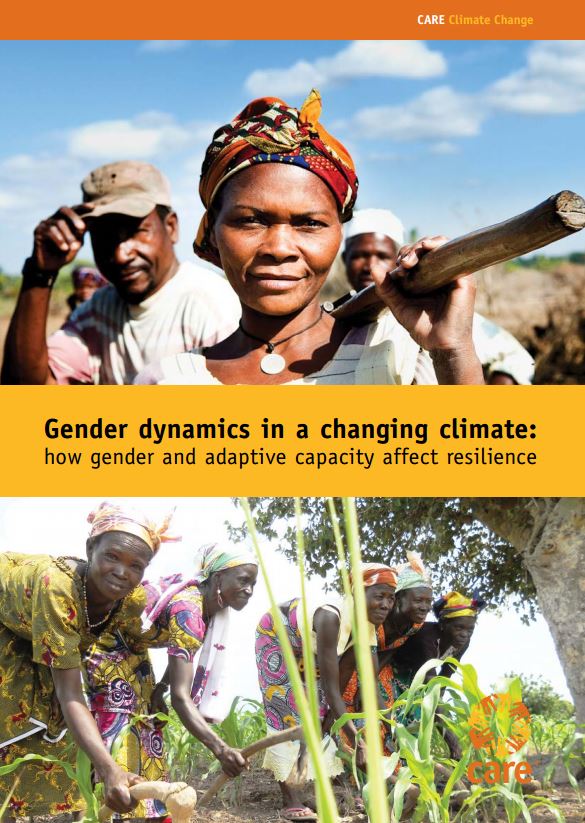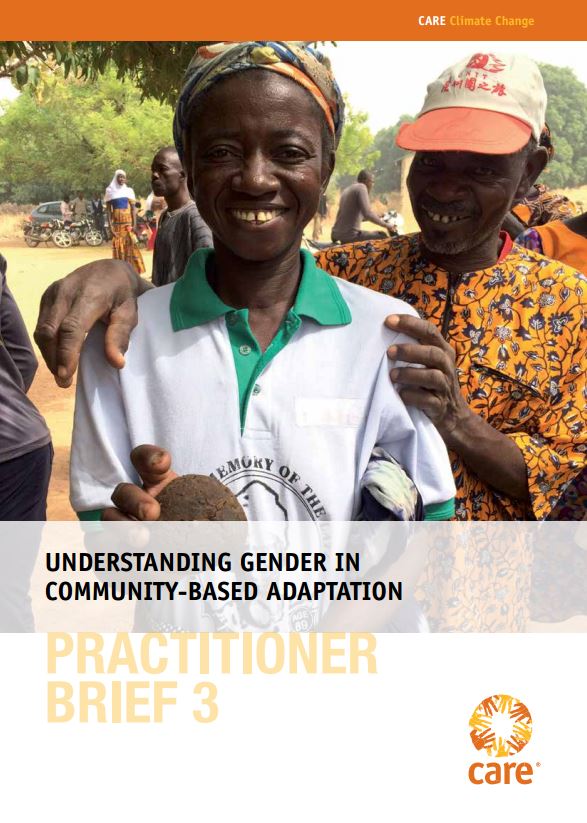Purpose:
The brief identifies the factors shaping gender dynamics and adaptive capacity and gives examples of how to integrate gender into community based adaptation approaches as well as outlining knowledge gaps and recommendations for policy and practice.
This learning brief synthesises lessons drawn from CARE’s Adaptation Learning Programme for Africa (ALP), which has been supporting vulnerable communities in sub-Saharan Africa to adapt to the impacts of climate change since 2010. It is based on evidence and practical experience in implementing community based adaptation (CBA), about gender dynamics and the ways in which CBA can increase adaptive capacity and promote gender equality.
Overview
Recommendations for policy and practice:
- Tackle the gender dimensions of livelihoods: they are context-specific and addressing them in appropriate ways demands context-specific action. Gender-sensitive analysis, policy and planning is critical to this.
- Include gender equality in climate change policy goals and strategies.
- National and sub-national adaptation planning needs to be led by affected communities, and be based on an understanding of the gendered nature of climate change impacts as well as adaptation initiatives themselves so as not to further entrench inequality. Gender-equitable participatory actions will bring more gender balance into initiatives.
- Some of the fundamental challenges women face cannot be resolved through a single CBA programme. Action is needed by other organisations and across government departments and through advocacy to address the entrenched drivers of gender inequality and poverty.
- Strengthen interdepartmental work between women’s departments and climate change departments.
- Close the gap between policy and implementation where adequate policies do exist that focus on addressing gender equality.
- Power imbalance and access to decision-making in the home, community and country must be recognised and addressed in the global response.
- Approach efforts to address adaptive capacity and gender equality not as an issue for women alone, but as an issue that is critical for the advancement of everyone in society; it is an indispensable part of achieving social justice.
- Invest in context-specific analysis as it is critical to understand the interconnected factors shaping adaptive capacity in order to design effective and appropriate adaptation action.
- Invest in improving women’s economic empowerment in the face of climate change to address the way resources and labour are distributed and valued in the economy.
- Programmes need appropriate timeframes and adequate resources in order to influence social change.
- CBA programme designs should be required to produce gender disaggregated monitoring and to establish monitoring and evaluation of changes in gender dynamics.
- Investing in understanding and measuring the gendered impacts of climate change beyond economic loss is important for making all types of loss and damage visible and to ensure it is accounted for, so as to build an evidence base of the human impact of climate change.
Usage: Guideline for implementation
Audience: Staff and Practitioners
Reference: Care, Gender dynamics in a changing climate: how gender and adaptive capacity affect resilience. accessible from: http://careclimatechange.org/wp-content/uploads/2015/11/Gender-and-Adaptation-Learning-Brief.pdf [last accessed 28 Sept 2016]
![]()



